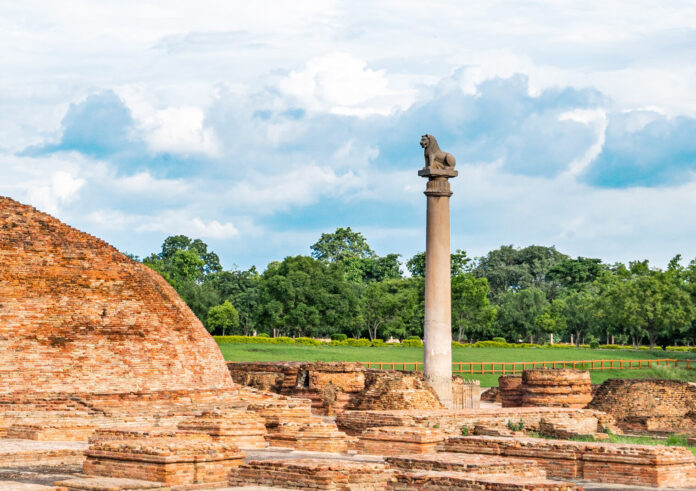The earliest surviving architectural heritage in India belongs to the Mauryan Empire. The art and architecture during the Mauryan Empire are considered one of the finest works of Indian art. The art and architecture mainly during Ashoka’s reign were at their pinnacle and belonged to the category of court art. The numerous stone stupas and monuments the third Emperor erected in and around India are evidence of his unwavering devotion to Buddha.
Since the empire was centred in Pataliputra, now known as Patna, the modern-day capital of Bihar, several Mauryan architectural structures were built throughout the state of Bihar. Read on to find more about three ancient architectural wonders from the Mauryan empire that can be visited in Bihar:
Ashoka Pillar, Vaishali
One of the nineteen remaining columns that Emperor Ashoka built or at the very least inscribed with edicts during his reign is the Ashoka Pillar. This monolithic column is located in Vaishali, Bihar. However, there is not just one pillar that was built. Instead, it was a series of monolithic columns, called the “Pillars of Ashoka”. These are scattered across the northern Indian subcontinent and some are preserved only in a fragmentary state. The Ashoka pillar stands at a height of 40 to 50 feet. On its top, is a life-size lion carved out of the stone.
Barabar Caves
Another significant landmark from the Mauryan era is Barabar Caves on the Barabar hills. These caves can be found at Makhdumpur, in the Bihar district of Sultanpur. These caverns are also the oldest rock-cut caves still in existence in India. There are a total of seven caves: four on Barabar Hill and three on Nagarjuni Hills, which is about two kilometres away. These caves are the epitome of the unique skills of the then-artisans. The craves on Barabar Hills were dedicated to followers of the Ajivika sect of Makhali Gosala by Emperor Ashoka.
Lauriya Nandangarh Stupa
The Ashoka Pillars comprises the six proclamations that Ashoka issued in 244 BC. One of these is located at Lauriya Nandangarh, a small town in the West Champaran region of Bihar. Ashoka erected a 32-foot-tall sandstone pillar with a round abacus at its top, on which the famous statue of a lion stands. The remnants of a large stupa can be found on a mound named Nandangarh, which is located 2 km southwest of the Ashokan Pillar. It is believed to be one of the largest Stupas in India.


